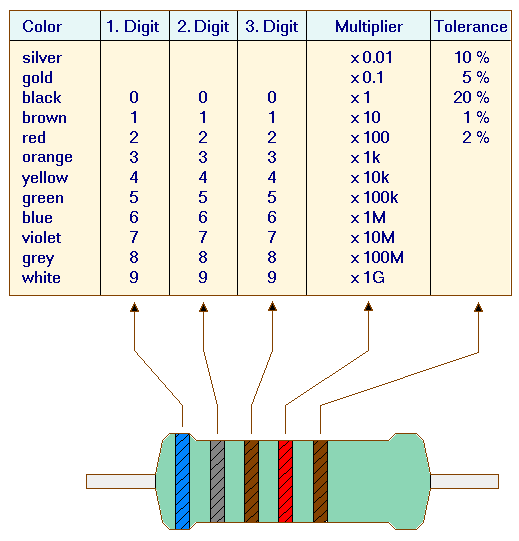| The ebook FEEE - Fundamentals of Electrical Engineering and Electronics is based on material originally written by T.R. Kuphaldt and various co-authors. For more information please read the copyright pages. |

|

Home  Reference Reference  Resistor Color Codes Resistor Color Codes |
|||||||||||||||
| See also: Resistors | |||||||||||||||






|
|||||||||||||||
|
Resistor Color Codes The colors brown, red, green, blue, and violet are used as tolerance codes on 5-band resistors only. All 5-band resistors use a colored tolerance band. The blank (20%) "band" is only used with the "4-band" code (3 colored bands + a blank "band"). Folllowing are a few examples of color coded resistors:
|
|||||||||||||||
Home  Reference Reference  Resistor Color Codes Resistor Color Codes |
|||||||||||||||
Last Update: 2010-12-01







